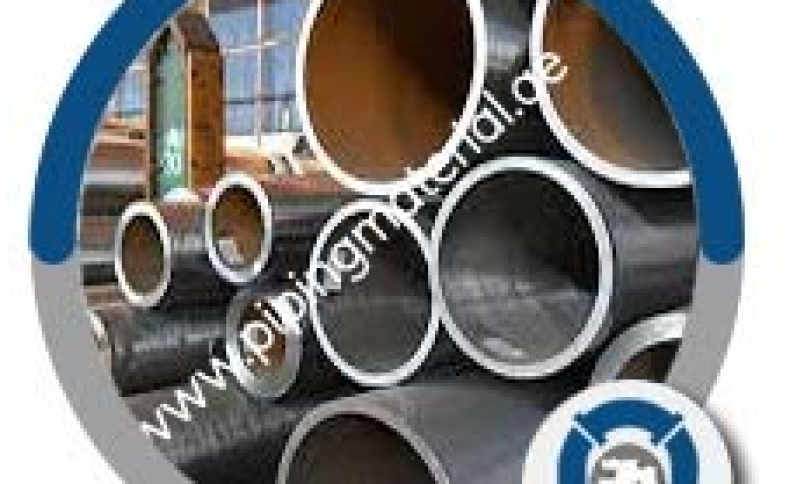ASTM a335 p9 pipe
January 31, 2023 - 0 COMMENTS

1.What is the difference between P9 and P91?
P9 and P91 are grades of alloy steel used to make pipes and tubes. Both are known for being strong and able to handle high temperatures. They can be used in power plants, petrochemical plants, and other high-temperature applications.
The main difference between P9 and P91 is in their chemical makeup. P9 is a ferritic alloy steel with 9% chromium, and P91 is a 9Cr-1Mo alloy steel with 9% chromium, 1% molybdenum, and a low fraction of vanadium. When molybdenum and vanadium are added to P91, it becomes more robust and less likely to crack at high temperatures than P9.
In terms of its mechanical properties, P91 is stronger than P9 in terms of its yield strength, tensile strength, and resistance to creeping at high temperatures. Due to the molybdenum and vanadium in it, P91 is also more resistant to corrosion.
P9 is usually used when high strength and corrosion resistance are not as crucial as in low-pressure or low-temperature systems. On the other hand, P91 is frequently employed in high-pressure & high-temperature applications, such as power generation & petrochemical processing, where its improved strength and resistance to creep are needed.
-
How do you weld ASTM a335 p91 pipe material?
ASTM A335 P91 is a ferritic alloy steel pipe often used in high-pressure places like power plants. The way this material is welded will depend on the size & thickness of the pipe and the type of welding being done. Some of the most common ways to weld ASTM A335 P91 pipes are:
Gas Tungsten Arc Welding (GTAW): This method is called Tungsten Inert Gas (TIG) welding and is often used to join pipes with thin walls and small diameters.
GMAW stands for Gas Metal Arc Welding: This method, called Metal Inert Gas (MIG) welding, is usually used to join more extensive and thicker pipes.
SMAW or Shielded Metal Arc Welding: This method is called “stick welding,” It is often used to join large pipes or thick walls.
When welding ASTM A335 P91 material, it is essential to remember that proper preheating and post-weld heat treatment are needed to keep the material’s mechanical properties.
-
What is the holding temperature for 91 grade as per ASME Section 1?
According to ASME Section I, the minimum holding temperature for P-91 pipe material is 1220°C (660°C). This temperature should be kept for at least 1 hour per 25 mm of thickness or a fraction of that, or at least 2 hours.
It’s important to know that the holding temperature for post-weld heat treatment of P91 material is greater than that of carbon steel & low alloy steels. P91 material has a higher percentage of alloys, so it needs a higher PWHT temperature to ensure that the microstructure is completely changed and that all mechanical properties are fully established.
It is also important to consider that the holding temperature must be kept within +/- 15°C (27°F) of the specified temperature to get the suitable microstructure and properties.
-
What is ASTM a335 p9 pipe used for?
ASTM A335 P9 is a ferritic alloy steel pipe often used in high-pressure places like power plants. Most of the time, P9 pipe material is used in places with higher than 570°F, like refineries, power plants, petrochemical plants, or other high-temperature services.
ASTM A335 P9 pipe is often used for the following:
Power Generation: P9 pipe is often used in power plants to make high-temperature, high-pressure steam lines, headers, and other steam turbine parts.
Refineries: P9 pipe is used to build high-temperature process lines and equipment in refineries and petrochemical plants, such as heat exchangers, boilers, and other process equipment.
High-Temperature Service: P9 pipe is also used in other high-temperature services, such as waste heat recovery units, superheaters, and reheater tubing in power plants and other process industries.
It’s important to know that ASTM A335 P9 is a chrome-moly alloy steel pipe often used in high-temperature applications. However, because it has a low nickel content, it can’t be used in sour service environments.
-
Can I import p91 pipe without a broker in Oman?
To clear goods through customs in Oman, you usually need a licensed customs broker. The Omani Customs and Excise Department is in charge of customs clearance in Oman. If you want to bring P91 pipe material into Oman, you should check the specific rules and requirements with them.
It’s also crucial to remember that you must follow any rules and laws about importing P91 pipe material, such as any tariffs, taxation, or import quotas. When bringing P91 pipe material into Oman, you may also have to follow other compliance and legal requirements, such as getting the proper licenses and permits, health and safety rules, and environmental rules.







